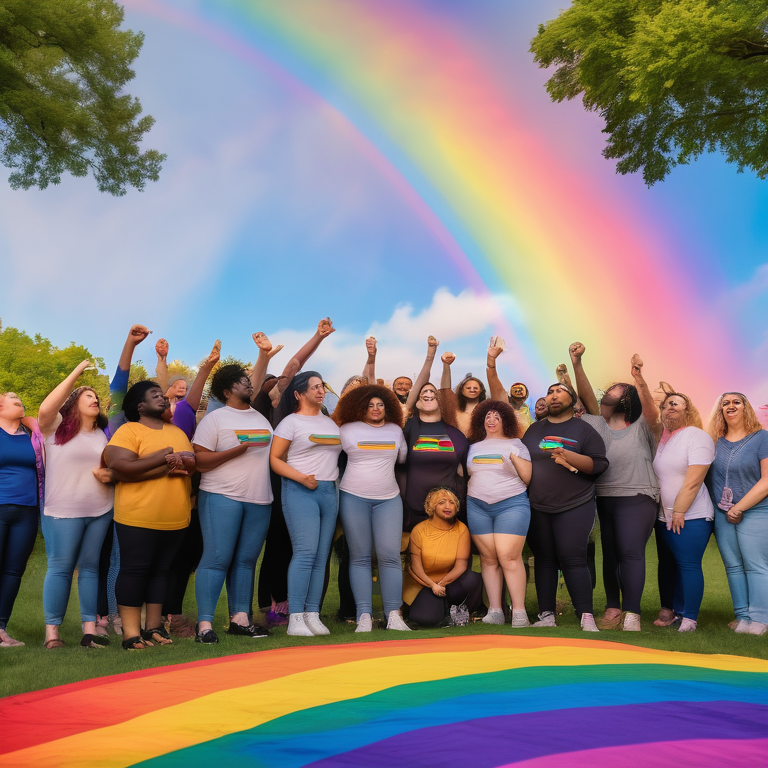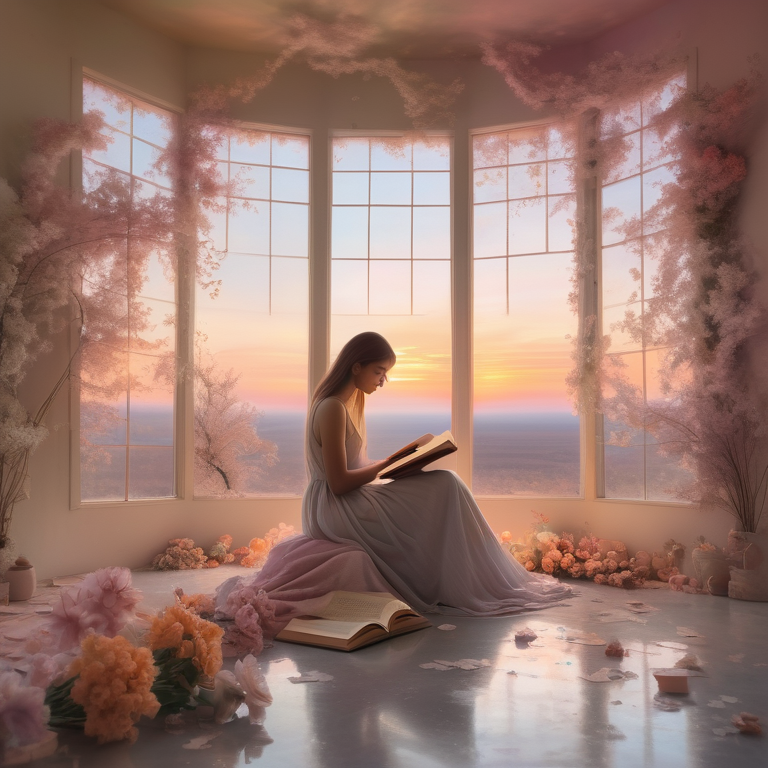The Female Bildungsroman and Sexual Identity

Key Highlights
- The female bildungsroman is a genre of literature that explores the growth and development of female protagonists.
- It delves into the complexities of sexual identity and the role it plays in the protagonist’s journey of self-discovery.
- Female bildungsromans often challenge societal expectations and gender norms, providing a platform for empowerment and resistance.
- The genre has seen influential authors like Margaret Atwood, who have made significant contributions to the exploration of sexual identity in their works.
- The setting and psychological landscape play a crucial role in shaping the female bildungsroman, reflecting the internal struggles of the protagonist.
- Feminist perspectives and psychoanalytic approaches have been instrumental in analyzing and critiquing the genre’s portrayal of sexual identity.
Introduction
The female bildungsroman is a fascinating genre of literature that delves into the growth, development, and self-discovery of female protagonists. Derived from the German term “bildungsroman,” meaning “novel of formation,” this genre has a rich history dating back to the 18th century. While the bildungsroman traditionally focused on the male protagonist’s journey towards maturity and self-realization, the female bildungsroman emerged as a distinct subgenre that explored the unique challenges and experiences faced by women.
Understanding the Female Bildungsroman
To understand the female bildungsroman, it is essential to explore the history of the bildungsroman itself. The bildungsroman originated in Germany and gained popularity during the Romantic era. It typically follows the protagonist’s coming-of-age journey, encompassing their physical, emotional, and intellectual growth.
The female bildungsroman takes this framework and applies it specifically to female protagonists, highlighting their experiences, struggles, and triumphs. It offers a unique lens through which to explore themes of identity, agency, and self-discovery from a female perspective. The genre provides a platform for examining the complexities of sexual identity and the challenges faced by women in navigating societal expectations and gender norms.
The bildungsromane genre, which focuses on the moral and psychological growth of the main character, has seen various adaptations over time. The female bildungsromane of the 20th century have depicted the struggle against patriarchal gender norms and societal expectations. These stories showcase the journey of women striving for autonomy, creativity, and maturity in a world that often seeks to suppress them.
The Female Bildungsroman is a genre of literature that focuses on the growth and development of a young woman from childhood to adulthood. It explores themes such as independence, identity, and societal expectations. This literary genre has been widely studied and analyzed by scholars, including Ellen McWilliams, a Senior Lecturer in English Literature at Bath Spa University in the UK. Through the lens of the Female Bildungsroman, authors delve into the complexities of female experiences and challenges, offering readers insight into the evolving roles and aspirations of women in society.
Historical Context and Evolution
The female bildungsroman has evolved in response to changing societal norms and the feminist movement. It emerged in the late 18th century as women began to assert their voices and challenge traditional gender roles. As women gained more opportunities for education, including higher education, and independence, their experiences and struggles became prominent themes in literature.
In the early works of the female bildungsroman, authors often depicted female characters seeking personal growth and independence in a male-dominated society. These early narratives focused on the protagonist’s journey towards self-discovery and the fulfillment of their own desires and ambitions. Over time, the genre has expanded to explore a broader range of experiences and identities, reflecting the evolving social landscape and the diverse perspectives of women.
Defining Characteristics of Female Bildungsromans
Female bildungsromans share several defining characteristics that set them apart from their male counterparts. These characteristics shape the narrative structure and thematic elements of the genre.
One key characteristic is the focus on female protagonists and their experiences of growth, self-discovery, and empowerment. Female bildungsromans often challenge societal expectations and gender norms, providing a platform for exploring the complexities of sexual identity and the struggles faced by women in defining themselves.
Another defining characteristic is the emphasis on the psychological and emotional development of the protagonist. The genre delves into the internal struggles and conflicts that shape the protagonist’s journey, offering a nuanced portrayal of their thoughts, feelings, and desires.
Overall, the female bildungsroman explores themes of identity, agency, and self-realization from a female perspective, providing a platform for feminist discourse and the exploration of sexual identity.
Sexual Identity in Female Bildungsromans
Sexual identity plays a crucial role in the female bildungsroman, shaping the protagonist’s journey of self-discovery and the challenges they face in defining themselves. The genre provides a platform for exploring the complexities of sexual orientation, desire, and societal expectations regarding femininity.
Female bildungsromans often depict the protagonist’s exploration of their own sexual identity and their struggle to reconcile it with societal norms. This exploration can range from the protagonist discovering their own desires and preferences to grappling with societal pressures and expectations related to gender and sexuality. The genre offers a space for representation and empowerment, challenging traditional notions of sexual identity and advocating for self-acceptance and authenticity.
Exploration of Sexual Identity through Narratives
The exploration of sexual identity is a central theme in many female bildungsromans. Through narratives that delve into the protagonist’s internal struggles and external experiences, authors provide readers with a nuanced understanding of sexual identity and its impact on personal growth. Some key aspects of this exploration include:
- Self-discovery and questioning: Female protagonists in bildungsromans often embark on a journey of self-discovery, exploring their own desires, attractions, and identity.
- Coming to terms with societal expectations: The protagonist must navigate the societal expectations and norms surrounding sexual identity, often facing challenges and resistance.
- Overcoming internal conflicts: The exploration of sexual identity can lead to internal conflicts as the protagonist grapples with their own desires and societal expectations.
- Embracing authenticity: Ultimately, the protagonist learns to embrace their true self and accept their sexual identity, paving the way for personal growth and empowerment.
Empowerment and Resistance in Sexual Identity Formation
The exploration of sexual identity in female bildungsromans often goes hand in hand with themes of empowerment and resistance. As the protagonist navigates societal expectations and norms regarding sexual identity, they encounter challenges that require strength and resilience. Some key elements of empowerment and resistance in sexual identity formation include:
- Challenging gender norms: Female protagonists often challenge traditional gender norms and stereotypes, asserting their own desires and choices.
- Breaking free from societal constraints: The protagonist resists societal pressures and expectations, choosing to define their own sexual identity on their terms.
- Claiming agency and autonomy: Through their journey of self-discovery, the protagonist learns to assert their own agency and make decisions that align with their true self.
- Overcoming adversity: The exploration of sexual identity often involves overcoming adversity and societal barriers, leading to personal growth and empowerment.
Key Themes and Motifs
The female bildungsroman explores several key themes and motifs that shape the protagonist’s journey of self-discovery. These themes and motifs reflect the challenges and experiences unique to the female experience. Some key themes and motifs in the genre include:
- The journey of self-discovery: The protagonist embarks on a journey of self-discovery, exploring their identity, desires, and aspirations.
- Conflict and resolution: The protagonist faces conflicts and challenges, both internal and external, on their path to self-realization.
- Society vs. self: The tension between societal expectations and the protagonist’s individual desires and identity is a recurring theme in the female bildungsroman.
The Journey of Self-Discovery
The journey of self-discovery is a central theme in the female bildungsroman. The protagonist embarks on a quest to understand themselves, their desires, and their place in the world. This journey often involves:
- Exploring personal identity: The protagonist grapples with questions of who they are, what they want, and how they fit into the world around them.
- Seeking personal growth: Throughout the narrative, the protagonist undergoes personal and emotional growth, learning from their experiences and discovering their strengths and weaknesses.
- Embracing authenticity: As the protagonist delves deeper into their self-discovery, they learn to embrace their true self and live authentically, despite societal expectations and pressures.
Conflict and Resolution: Society vs. Self
In the female bildungsroman, the conflict between society’s expectations and the protagonist’s individual desires and identity is a recurring theme. The protagonist often faces external and internal conflicts as they navigate societal norms and expectations. Some common conflicts include:
- Societal pressure to conform: The protagonist may experience pressure to conform to traditional gender roles and expectations, leading to internal conflict.
- Internal struggles: The protagonist grapples with their own desires and identity, often conflicting with societal expectations.
- Resolution and transformation: Over the course of the narrative, the protagonist confronts and resolves these conflicts, leading to personal growth, empowerment, and a greater understanding of their own identity.
Influential Authors and Works
Several influential authors have made significant contributions to the female bildungsroman genre, shaping its themes and narratives. One notable author is Margaret Atwood, known for her exploration of female identity and sexual politics in works such as “The Handmaid’s Tale” and “Alias Grace.” Atwood’s works often feature complex female protagonists who grapple with their own desires, societal expectations, and the complexities of sexual identity. Her contributions to the genre have sparked critical discourse and furthered the exploration of sexual identity in the female bildungsroman, with many of her works available in ebook format for easy access and exploration.
Pioneering Voices in the Genre
Throughout the history of the female bildungsroman, several pioneering voices have emerged, shaping the genre and providing unique perspectives on sexual identity and female experiences. Some notable authors include:
- Jane Austen: Austen’s novels, such as “Pride and Prejudice” and “Emma,” explore the growth and development of female protagonists within the constraints of societal expectations and gender norms.
- Charlotte Bronte: Bronte’s “Jane Eyre” follows the journey of its eponymous protagonist as she navigates societal expectations, explores her own desires, and asserts her independence.
- Sylvia Plath: Plath’s semi-autobiographical novel “The Bell Jar” delves into the protagonist’s struggle with mental health, identity, and societal expectations, offering a unique perspective on the female bildungsroman.
Contemporary Contributions
In addition to influential authors from the past, contemporary writers continue to make significant contributions to the female bildungsroman genre. These authors explore diverse experiences of sexual identity and offer fresh perspectives on the genre. Some notable contemporary authors and works include:
- Chimamanda Ngozi Adichie’s “Americanah”: The novel follows the journey of a Nigerian woman as she navigates race, identity, and sexual politics in America.
- Zadie Smith’s “White Teeth”: Smith’s debut novel explores the lives of multiple characters from diverse backgrounds, touching on themes of identity, immigration, and cultural assimilation.
- Roxane Gay’s “An Untamed State”: The novel tackles issues of sexual violence, trauma, and identity as the protagonist confronts the aftermath of her kidnapping.
The Role of Setting in Female Bildungsromans
The setting in female bildungsromans plays a significant role in shaping the protagonist’s journey of self-discovery and the exploration of sexual identity. The setting, whether a physical location or an emotional atmosphere, often mirrors the inner conflicts and struggles of the protagonist. It provides a backdrop against which the protagonist’s personal growth and transformation unfold. The psychological landscape, in particular, reflects the protagonist’s internal struggles, desires, and aspirations, offering insights into their journey of self-discovery.
Geographical and Social Environments
The geographical and social environments depicted in female bildungsromans contribute to the exploration of sexual identity and the growth of the protagonist. The protagonist’s surroundings can shape their experiences, opportunities, and challenges, influencing their understanding of their own desires and identity. Some aspects of geographical and social environments in female bildungsromans include:
- Cultural norms and traditions: The cultural context in which the protagonist exists can dictate societal expectations and norms regarding sexual identity, influencing their journey of self-discovery.
- Urban vs. rural settings: The setting, whether urban or rural, can impact the protagonist’s exposure to diverse perspectives, opportunities for self-expression, and acceptance of sexual identity.
- Socioeconomic factors: The protagonist’s socioeconomic background can affect access to education, independence, and the ability to assert their own desires and identity.
The Psychological Landscape
The psychological landscape portrayed in female bildungsromans provides insights into the protagonist’s internal struggles and desires. It reflects the emotional turmoil, conflicts, and growth experienced by the protagonist on their journey of self-discovery. Some elements of the psychological landscape include:
- Internal conflicts: The protagonist may grapple with conflicting desires, societal expectations, and their own sense of self, leading to internal struggles and personal growth.
- Emotional development: The psychological landscape showcases the protagonist’s emotional growth and the deepening understanding of their own desires and identity.
- Symbolism and metaphor: Authors often use symbolism and metaphor to represent the protagonist’s emotional and psychological state, providing a deeper understanding of their journey.
Criticism and Analysis
The female bildungsroman, a genre focused on the moral and psychological growth of a female protagonist, has attracted critical analysis from diverse viewpoints such as feminist and psychoanalytic perspectives. These analytical approaches offer profound insights into how sexual identity and the female journey are depicted within this literary genre.
Feminist critiques of the female bildungsroman often examine how societal norms and gender expectations influence the protagonist’s development. They explore themes of empowerment, agency, and resistance against patriarchal structures. Additionally, feminist readings delve into how female characters navigate relationships, career aspirations, and self-identity in a male-dominated world.
On the other hand, psychoanalytic interpretations of the female bildungsroman focus on the protagonist’s inner psyche, unconscious desires, and emotional growth. Analysts may dissect the character’s dreams, fears, and motivations to uncover underlying psychological conflicts that shape her coming-of-age narrative.
Key areas of criticism within the female bildungsroman genre include discussions on agency versus constraint, autonomy versus conformity, and self-discovery versus societal expectations. Scholars also debate how race, class, and sexuality intersect with gender in shaping a female character’s journey towards self-realization.
By exploring these critical perspectives, readers gain a deeper understanding of how the female bildungsroman reflects broader cultural discourses on gender roles, identity formation, and social norms. The genre serves as a rich tapestry for examining complex issues related to women’s experiences and challenges in navigating personal growth within societal constraints.
Feminist Perspectives on the Genre
Feminist perspectives on the female bildungsroman delve into the genre’s ability to defy patriarchal norms and empower its female protagonists. These viewpoints scrutinize how the genre captures women’s journeys, delves into sexual identity exploration, and challenges societal norms and pressures. The feminist analysis of the female bildungsroman frequently centers on themes of autonomy, portrayal, and the overturning of conventional gender expectations. Through an exploration of power dynamics and societal frameworks embedded in the narrative, feminist perspectives unveil opportunities for rebellion and empowerment within the generic female bildungsroman written by women writers. By dissecting these aspects, feminists shed light on how this genre can serve as a platform for advocating gender equality and challenging oppressive systems.
Psychoanalytic Approaches to Sexual Identity
Psychoanalytic Approaches to Sexual Identity provide a unique perspective on characters’ behaviors by utilizing Freudian theories to explore how unconscious desires influence their development. In the context of female bildungsromans, this approach focuses on early relationships, societal norms, and internal conflicts that shape sexual identity formation. By dissecting characters’ interactions and psychological struggles, analysts aim to reveal repressed desires and conflicts that drive their actions. Concepts such as the Oedipal and Electra complexes proposed by Freud are often referenced to interpret characters’ relationships and decisions regarding sexuality.
Applying psychoanalytic readings to female bildungsromans offers valuable insights into the intricate connection between sexual identity, psychological processes, and societal expectations. This enriches interpretations of these narratives and deepens our understanding of women’s experiences within literary contexts. Moreover, analyzing various factors like character motivations, subconscious influences, and symbolic representations through a psychoanalytic lens can unveil hidden layers of meaning in these texts. By delving into the complexities of sexual identity formation through psychoanalytic approaches, scholars can uncover nuanced portrayals of gender roles, power dynamics, and personal growth in literature.
Conclusion
In delving into the female Bildungsroman and sexual identity, we unearth a realm where narratives intertwine with self-discovery and societal constructs. Through empowering characters and pivotal themes, these works challenge norms and foster resistance. As we explore the psychological landscapes and geographical settings of these narratives, we witness the evolution of female identity. Pioneering authors and contemporary voices alike contribute to this genre, enriching our understanding of the female journey. Feminist perspectives and psychoanalytic lenses offer compelling analyses, inviting us to ponder the nuances of sexual identity development. By engaging with these profound works through an inquisitive lens, we embark on a transformative journey of exploration and enlightenment. Share your insights in the comments below.
Frequently Asked Questions
How do Female Bildungsromans Differ from their Male Counterparts?
Female bildungsromans differ from their male counterparts in several ways. They focus on the unique experiences and challenges faced by female protagonists, often challenging traditional gender norms and expectations. These novels explore issues of sexual identity, agency, and female empowerment. Additionally, female bildungsromans may address broader societal issues, such as the impact of gender norms on education and career opportunities.
What is a Bildungsroman novel and how does it relate to the female experience?
A bildungsroman novel is a coming-of-age story that follows the protagonist’s growth and development from youth to adulthood. In the context of the female experience, the female bildungsroman explores the unique challenges and experiences faced by women as they navigate societal expectations, gender norms, and the exploration of sexual identity.
How does the exploration of sexual identity contribute to the development of the protagonist in a Bildungsroman?
The exploration of sexual identity in a bildungsroman contributes to the development of the protagonist by providing a platform for self-discovery, personal growth, and empowerment. It allows the protagonist to navigate societal expectations, challenge gender norms, and assert their own desires and identity.
Can you provide examples of classic Bildungsroman novels that focus on female characters and their sexual identity?
Yes, there are several classic bildungsroman novels that focus on female characters and their exploration of sexual identity. Some examples include “Jane Eyre” by Charlotte Bronte, “Pride and Prejudice” by Jane Austen, and “The Bell Jar” by Sylvia Plath.
How does societal expectations and gender norms play a role in the female Bildungsroman genre?
Societal expectations and gender norms play a significant role in the female bildungsroman genre. These expectations and norms often become obstacles for the protagonist as they navigate their personal growth, explore their desires, and assert their own identity in a society that imposes limitations and expectations based on gender.




 ToyJoy Furry Fun Wrist Cuffs Zebra
ToyJoy Furry Fun Wrist Cuffs Zebra